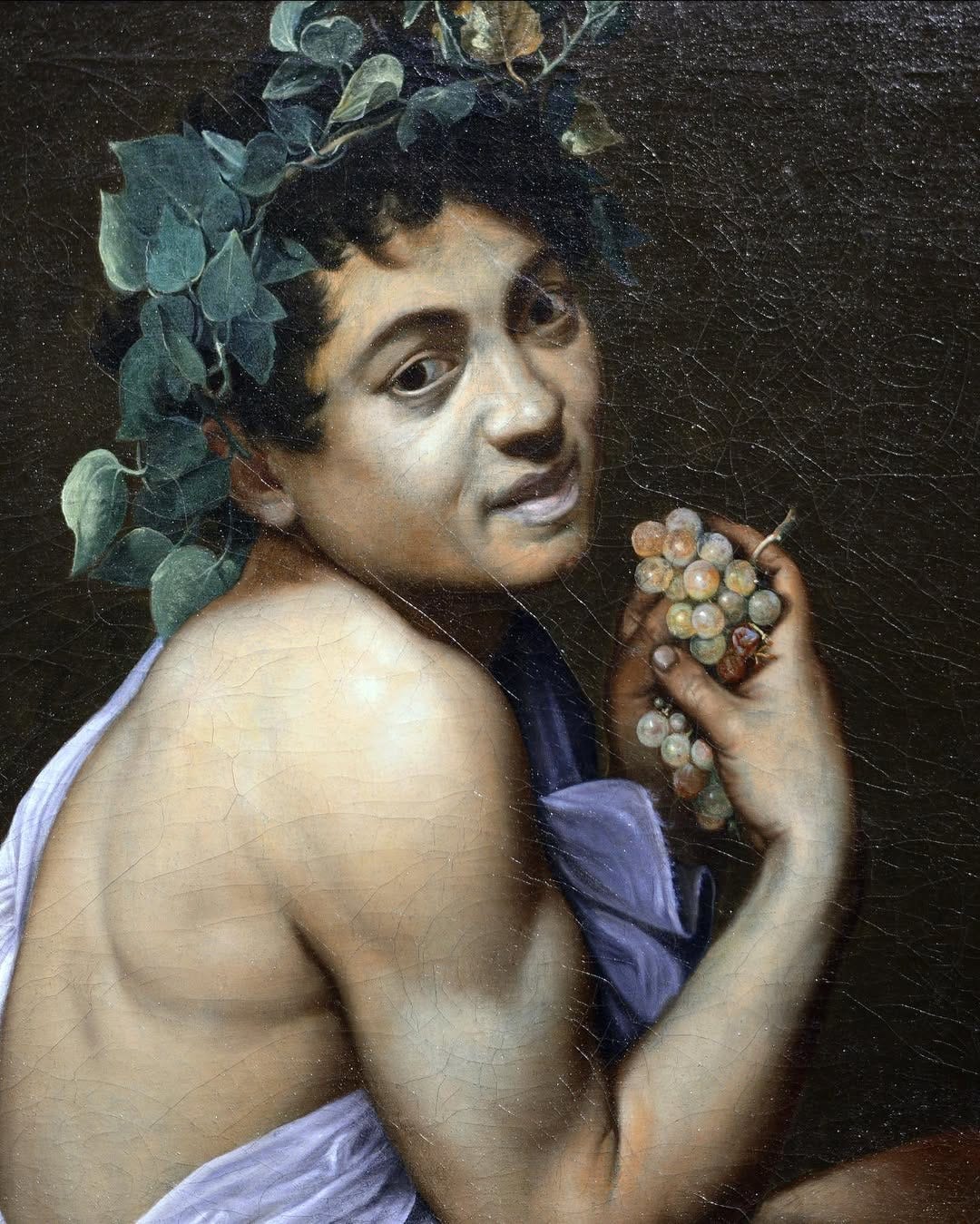CARAVAGGIO - YOUNG SICK BACCHUS, 1593
This subject, which is clearly classical, immediately strikes us as unusual. The young deity is casting a sidelong glance at us, wearing a peculiar expression on his face. His limited power is evident through a few natural gifts present: small grapes, one dark and one white, and two pale peaches. He appears sickly with a yellow complexion and livid lips.
It is likely that Young Sick Bacchus is a self-portrait of Caravaggio, as the figure appears to be ill during a period when the artist was known to be sick, and also because Caravaggio often painted himself into his works using a mirror. This was partially because he was poor, which prevented him from hiring a model to pose for him.
This represents the Christian concept of vanitas - the futility of worldly possessions, their temporary existence, and eventual deterioration. If we examine the shared similarities between Bacchus and Christ, the Bacchus we see must represent the suffering Christ. The Christ of the Passion, in other words, as grapes prefigure wine.
There was a strong need for cabinet pieces like this: paintings focused on a single subject with minimal spatial context, making them easy to incorporate into furniture arrangements. At the time, the expanding Roman aristocracy was in great need of decorations for its room.




